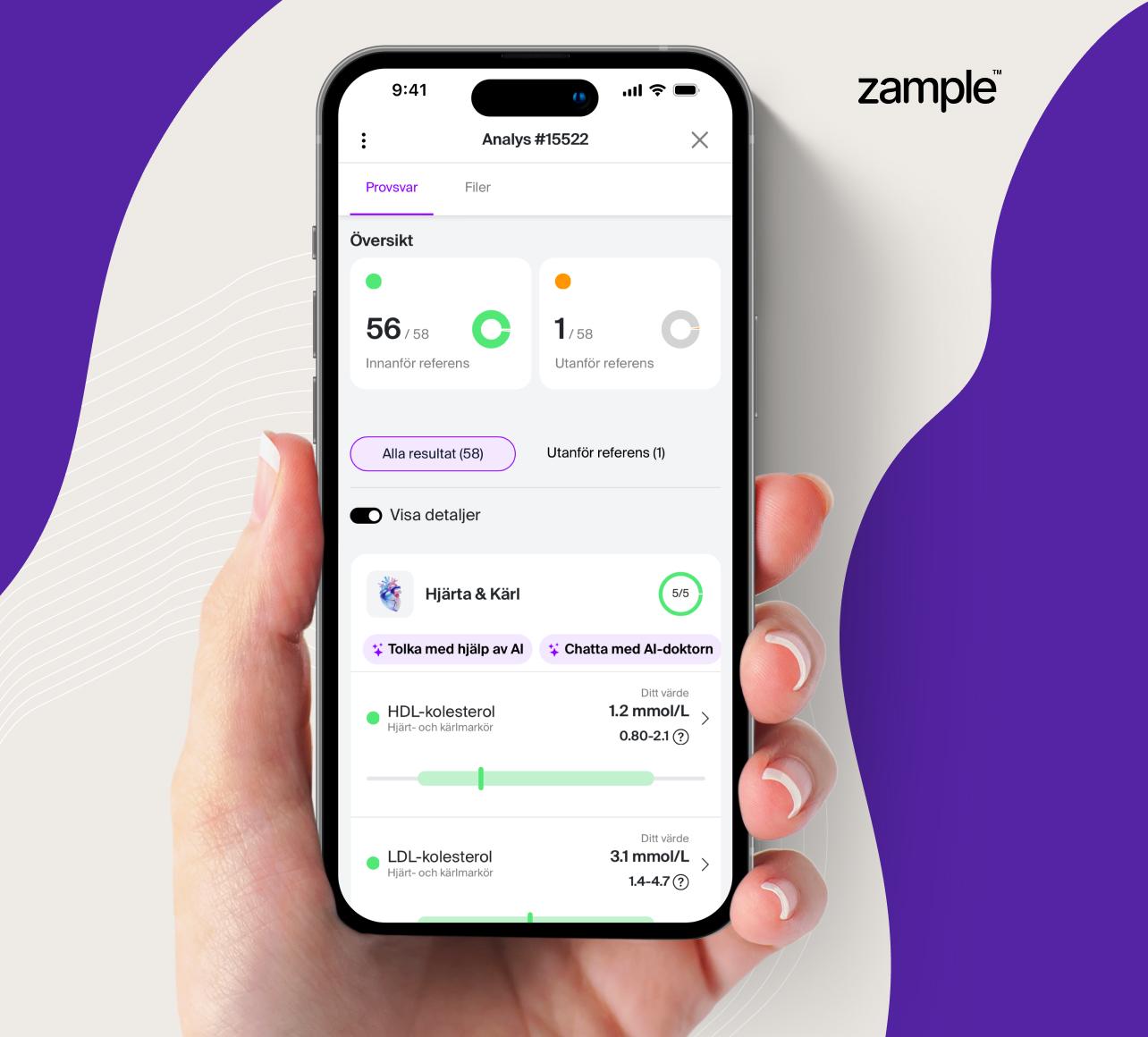The ApoB/ApoA1 ratio is a biomarker for assessing the balance between harmful and protective blood fats. The test provides a more accurate picture of your cardiovascular risk compared to traditional cholesterol tests and is used to identify the risk of cardiovascular diseases such as heart attack and stroke.
What does the ApoB/ApoA1 ratio show?
- Apolipoprotein B (ApoB): Found in LDL cholesterol and other blood fats that can contribute to atherosclerosis and cardiovascular disease.
- Apolipoprotein A1 (ApoA1): The main protein in HDL cholesterol, which helps the body transport excess fat and protects blood vessels.
- The ratio between these: The higher the ApoB/ApoA1 ratio, the greater the imbalance between harmful and protective blood fats – and thus the risk of cardiovascular disease.
Why choose the ApoB/ApoA1 ratio instead of just cholesterol tests?
Many people are familiar with the concepts of "good" and "bad" cholesterol (HDL and LDL), but measuring ApoB and ApoA1 provide a more detailed risk assessment. The AMORIS study, which included over 175,000 people, showed that the ApoB/ApoA1 ratio was the best single blood lipid marker for predicting the risk of heart attack and stroke. A large international study, INTERHEART, has also confirmed the importance of this ratio in the prevention of cardiovascular disease.
Do I need to fast?
No! Unlike traditional cholesterol tests, the ApoB/ApoA1 ratio is not affected by food intake, which makes the test easier to perform.
Interpretation of the ApoB/ApoA1 ratio
- Low risk: Women < 0.6 | Men < 0.7
- Moderate risk: Women 0.6–0.8 | Men 0.7–0.9
- High risk: Women > 0.8 | Men > 0.9
How can I influence my ApoB/ApoA1 ratio?
An elevated ApoB/ApoA1 ratio is an important risk marker for cardiovascular disease and can often be improved through lifestyle changes. By optimizing your health, you can lower your levels of ApoB (which reflects the "bad" LDL cholesterol) and increase ApoA1 (which reflects the "good" HDL cholesterol), thereby reducing your cardiovascular risk. Here are some scientifically proven ways to improve your ApoB/ApoA1 ratio:
- Increased physical activity
- Healthier diet (more unsaturated fats, less sugar and processed foods)
- Weight loss if overweight
- Quit smoking
In case of significantly elevated values, drug treatment may be appropriate - consult your doctor if you are unsure.
Order your test today, get test results within 1-3 days
The ApoB/ApoA1 ratio provides a deeper insight into your heart health and can be an important step in preventing future diseases. The test can only be ordered together with analyses of ApoB and ApoA1.
























